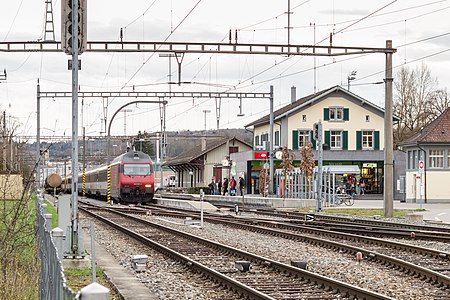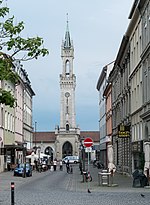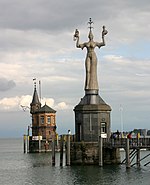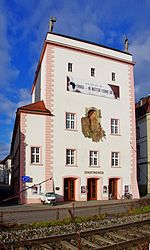Kreuzlingen Hafen railway station
KreuzlingenPages with no open date in Infobox stationRailway stations in the canton of ThurgauSwiss Federal Railways stations

Kreuzlingen Hafen railway station (German: Bahnhof Kreuzlingen Hafen) is a railway station in Kreuzlingen, in the Swiss canton of Thurgau. It is an intermediate stop on the Lake line and is served by local trains only. It is one of four stations within the municipality of Kreuzlingen.
Excerpt from the Wikipedia article Kreuzlingen Hafen railway station (License: CC BY-SA 3.0, Authors, Images).Kreuzlingen Hafen railway station
Hafenstrasse,
Geographical coordinates (GPS) Address Nearby Places Show on map
Geographical coordinates (GPS)
| Latitude | Longitude |
|---|---|
| N 47.649168055556 ° | E 9.1819611111111 ° |
Address
Hafenstrasse 25
8280
Thurgau, Switzerland
Open on Google Maps









